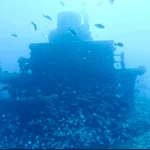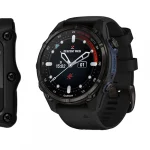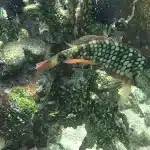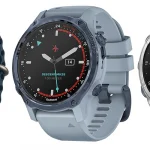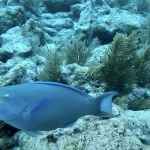The Zest of Advanced Dive Training in Key Largo
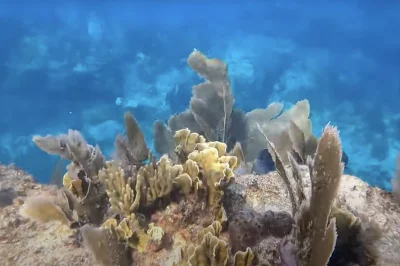
Table of Contents
- The Zest of Advanced Dive Training in Key Largo
- Key Largo’s Deep Dive Sites: Exploring the Unseen
- Essential Gear and Gas Blends: What Every Diver Needs
- The Rise of Rebreathers: A Sustainable Dive Option
- Reef Exploration: A Tech Diver’s Guide to Key Largo
- Custom Charters: Tailoring Dive Trips in the Keys
- Diving Safety in Depth: Key Largo’s Support Systems
- Preserving Paradise: Environmental Focus in Diving
Introduction
Key Largo, a diver’s paradise in the Florida Keys, offers extraordinary experiences for scuba enthusiasts. From custom gas blends and technical training to rebreather-friendly boats, this guide dives into the region’s top services and attractions for technical divers. Explore how these offerings can elevate your diving adventures in this tropical haven.
The Zest of Advanced Dive Training in Key Largo
Key Largo’s Deep Dive Sites: Exploring the Unseen
For the adventurous diver seeking depths between 180 and 300 feet, Key Largo presents a unique challenge, given that the most notable dive sites primarily max out around 130 feet. Despite this limitation, technical diving enthusiasts can find opportunities to explore less-publicised deep dive options and potentially discover new wrecks or dive sites through specialised excursions.
The centrepiece of Key Largo’s diving scene remains the Spiegel Grove wreck, which rests at a depth of approximately 130 feet. This former Navy ship attracts divers with its impressive size of 510 feet, adorned with thriving coral formations and abundant marine life. Its historical significance and challenging conditions make it a favoured choice for experienced divers looking to enhance their skills in deeper waters.
While the Duane wreck and Eagle wreck are also renowned attractions in the area, they typically offer dive experiences well within the recreational depth limits. Advanced divers are encouraged to seek customisation and private charters that may have access to deeper wrecks or planned explorations into the unknown sectors of the Florida Keys.
As the technical diving community continues to push the boundaries of exploration, the demand for deeper dive sites could inspire local sites to gain recognition. Operators focusing on technical dives could unveil previously undiscovered wrecks or underwater features. Adventurous divers are also leveraging technologies like mixed gas and rebreathers to extend their limits safely.
When planning dives at these depths, it’s essential for divers to possess advanced certifications (e.g., Tec 45+) as dives below 130 feet introduce complexities such as nitrogen narcosis and require meticulous gas management. Moreover, verifying the diving conditions and securing a trusted operator familiar with the area’s depths is crucial for ensuring both safety and enjoyment while diving.
Key Largo’s Deep Dive Sites: Exploring the Unseen
Custom gas mixes are critical for technical diving in Key Largo, where divers often encounter complex depth profiles and extended bottom times. Here’s why they matter:
Reduces Narcosis and Oxygen Toxicity Risks
Custom blends like trimix (helium-nitrogen-oxygen) and heliox (helium-oxygen) replace nitrogen with helium to minimise narcotic effects. Helium’s negligible narcotic impact enables deeper, safer dives beyond recreational limits (e.g., 400+ feet). This is particularly important in Key Largo’s deeper sites, where nitrogen narcosis could impair judgement at extreme depths.
Optimises Gas for Depth-Specific Safety
The Best Mix approach calculates gas composition to maximise allowable oxygen partial pressure (PO₂) and equivalent narcotic depth (END) for a specific dive plan, ensuring compliance with safety limits. For example, a mix optimised for 200 feet balances oxygen toxicity risks (controlled to 1.4ppO₂) while reducing narcosis via helium.
Efficiency in Team Diving
While Standard Mixes (predetermined gas blends for depth ranges) simplify communication and planning, custom mixes allow finer adjustments for:
- Variable depths: Key Largo’s sites may require deeper bottom gases and shallower decompression gases.
- Decompression efficiency: Optimised gas reduces hypoxic or hyperoxic phases during ascent.
Key Gas Mixes
| Mix Type | Composition | Purpose |
|---|---|---|
| Trimix | Helium, nitrogen, oxygen | Replace nitrogen to reduce narcosis |
| Heliox | Helium, oxygen | Extend ultra-deep dives (300+ feet) |
| Nitrox (EAN) | More oxygen, less nitrogen | Reduce narcosis in shallower dives |
While nitrogen-based standard mixes (e.g., 32% EAN) are simpler, custom trimix blends are essential for Key Largo’s technical dives, balancing safety, efficiency, and depth-specific challenges.
Essential Gear and Gas Blends: What Every Diver Needs
Rebreathers as Eco-Friendly Innovations
Rebreather diving in Key Largo is gaining momentum as an eco-conscious option, particularly with the use of models like the JJ CCR. These rebreathers recycle breathing gases while eliminating bubbles, significantly reducing underwater disturbance to marine ecosystems. The closed-loop system minimises noise and sediment disruption, making it ideal for observing sensitive reef species.
Key Technical Features
- JJ-CCR: A rugged, manual-controlled rebreather that integrates well with dive computers, designed to handle technical dives requiring precise gas management.
- Bubble-Free Diving: This aspect of rebreathers not only enhances the diving experience but also alleviates stress on coral reefs and marine life compared to traditional scuba systems.
Blue Star-Certified Dive Centres
In Key Largo, several dive centres emphasise environmental education and habitat conservation through the Blue Star programme. Below is a comparison of notable centres:
| Centre | Eco-Initiatives | Rebreather Offerings |
|---|---|---|
| Horizon Divers | Blue Star-certified; involved in community conservation like sea turtle rescues. | JJ CCR rebreathers (technical diving). |
| Sea Dwellers | Focus on eco-conscious practices; promotes responsible interaction with marine life. | General rebreather support. |
Horizon Divers stands out for specialising in JJ-CCR rebreathers and actively participating in community conservation, including rescues of marine life such as sea turtles.
Environmental Stewardship
Key practices among Blue Star centres include:
- Ecosystem Education: Providing briefings on Florida Keys National Marine Sanctuary rules and coral reef biology.
- Rescue Efforts: Collaborating with organisations like the Turtle Hospital for marine animal rehabilitation.
- Rebreather Advocacy: Promoting the use of these systems to minimise dive impacts while enabling advanced exploration opportunities.
For technical divers, both Horizon Divers and Ocean Divers offer rebreather-friendly dive sites in Key Largo, merging innovation with conservation efforts effectively.
The Rise of Rebreathers: A Sustainable Dive Option
Technical Dive Sites & Challenges
Key Largo’s deep wrecks are a focal point for technical diving, including:
- Spiegel Grove: Requires penetration dives into the engine room, necessitating safety lines, gas management, and strict adherence to decompression protocols.
- Northern Lights, Queen of Nassau, and Vitric: Located at depths of 150–220 feet, these sites demand advanced certifications and equipment like rebreathers.
Technical reef exploration extends to deeper sections of the Florida Keys’ coral ecosystems, though most reef diving in the area occurs at recreational depths (18–120 feet).
Addressing Common Myths
- Myth: Technical diving is only for experts.
- Reality: Centres like Horizon Divers offer certification courses (PADI Tec, TDI, IANTD) for transitioning recreational divers to tech diving roles, including public safety diving.
- Myth: Advanced planning is unnecessary.
- Reality: Safe execution requires decompression stop planning, gas redundancy, and contingency protocols. For example, the Spiegel Grove dive mandates running safety lines and limiting exploration to predefined paths to avoid silt disturbance.
Environmental Impact Mitigation
- Conservation Practices: Training programmes emphasize minimising reef contact and sediment disturbance, as seen in wreck dives where stirring silt can reduce visibility.
- Equipment Choices: Rebreather diving reduces bubble trails, potentially lowering disturbance to marine life.
Advanced Planning & Safety
Key considerations include:
| Aspect | Requirement |
|---|---|
| Certification | PADI Tec, TDI, or IANTD courses for wreck penetration, gas management, and decompression. |
| Gas Planning | Carrying extra gas reserves for extended decompression stops. |
| Safety Protocols | Use of guidelines, limited navigation, and no-excursion policies during penetrations. |
Dive operators like Horizon Divers and Rainbow Reef emphasize site-specific briefings and provide gear rentals/sales to ensure preparedness.
Dive Computers
- Diving Computers for Female Divers
- Wreck Diving Computers
- Beginner Diving Computers
- Low-Light Diving Computers
- Technical Diving Computers
- Freediving Computers
- Underwater Photography Diving Computers
- Cold-Water Diving Computers
- Travel-Friendly Diving Computers
- Multi-sport Diving Computers
- Budget-Friendly Diving Computers
- Advanced Recreational Diving Computers
- Smartwatch-Compatible Diving Computers
- Child-Friendly Diving Computers
- Military or Professional Diving Computers
Reef Exploration: A Tech Diver’s Guide to Key Largo
Custom Charters: Tailoring Dive Trips in the Keys
Key Largo stands as a premier destination for divers seeking to create customised diving experiences through private charters. These bespoke trips not only provide access to the world-renowned coral reefs and shipwrecks of the Florida Keys but also allow for a highly personalised adventure tailored to individual preferences.
Small Group Exclusivity
One of the primary benefits of custom charters is the limitation on group size, which typically caps at six divers. This small group dynamic fosters a more intimate and personalised setting during dives:
- Quiescence Diving Services limits groups to six and collaborates with Gypsy Divers for private boat access, ensuring a comfortable and exclusive diving environment.
- Sun Sports Charter and Horizon Divers also adhere to this six-diver maximum, allowing for more guided dives where personalised attention is prioritised.
Specialised Dive Experiences
Divers can choose from a variety of specialised experiences:
- Deep/Wreck Dives: Operators provide options for advanced dives reaching depths between 50 to 130 feet, perfect for enthusiasts seeking to explore historic wrecks.
- Coral Reefs & Marine Life: Charter services offer excursions to sites within the Upper Keys National Marine Sanctuary, known for its vibrant ecosystems and rich marine biodiversity.
Customisation & Training
Beyond just tailored itineraries, many dive operators provide opportunities for skill development:
- Certification Courses: Divers can further enhance their skills by enrolling in specialised courses like the Deep Diver or Wreck Diver certifications during their trip.
- Flexible Scheduling: Many charters offer both morning and afternoon two-tank dives, allowing divers to tailor their schedules according to their preferences.
Amenities & Logistics
Charters typically include essential equipment and amenities:
- Air tanks and weights are provided, along with refreshments such as fresh water and ice, ensuring divers stay comfortable and hydrated.
- Divers are reminded to bring their valid certification cards to ensure safety protocols are followed.
For those seeking deeper dives and a more tailored experience, Key Largo’s custom charters offer an unmatched diving experience, ensuring you make the most of your underwater adventures.
Custom Charters: Tailoring Dive Trips in the Keys
Operator Policies and Equipment Requirements
Key Largo dive operators enforce rigorous safety protocols, including mandatory equipment checks and strict health screenings. Divers must carry specific gear such as a secondary regulator (octopus), BCD, cutting device (knife or shears), SMB, and dive computer. Medical questionnaires are required, and divers must disclose any health issues that may contravene PADI standards. Doctor’s authorisation is mandatory for flagged conditions to ensure diver safety.
Minors (under 18) require parental supervision on boats, and unattended minors are prohibited. This measure promotes safe practices and ensures that young divers are guided appropriately during their experience. Dive centres also prohibit firearms and spearguns on boats to protect marine life and crew safety, enhancing the overall diving environment.
Instructor and Dive Group Management
Instructors undergo assessments to ensure they meet certifications from recognised agencies such as PADI, NAUI, and SSI. Operators conduct pre-dive briefings to review safety procedures, site-specific hazards, and emergency protocols. Equipment functionality is verified on the dock before departure, with dive plans including depth/time limits and hand signals to facilitate communication under water.
Emergency Procedures and Preparedness
Operators emphasize planned procedures for emergencies, such as rapid ascent protocols or SMB deployment. Dive teams are trained to respond to equipment failures or health incidents, with safety briefings covering access to emergency gear (such as first aid kits and life rafts) ensuring that divers are prepared in case of unforeseen circumstances.
It is also mandated that minor divers be supervised by a parent or certified professional, which adds an extra layer of safety for younger participants during their diving experience.
Best Practices for Divers
- Physical fitness: Divers should avoid diving if unwell or fatigued, as physical strain increases risk of incidents.
- Ongoing training: Divers are encouraged to continuously update their skills to adapt to changing conditions.
- Dive planning: Adhere to pre-set depth and time limits, while vigilantly monitoring air supply to ensure safety throughout the dive.
Safety Statistics and Risk Management
While diving fatalities are rare, with statistics showing 2–3 per 100,000 dives, risks do exist. Operators mitigate these through comprehensive measures including mandatory certifications, equipment checks, and hazard briefings. Interestingly, the drive to dive sites statistically poses a greater danger than the dive itself, as divers may encounter various hazards on the surface.
Operators like Island Ventures cater to shallow, well-maintained reefs, reducing complexity for divers who adhere to the guidelines, ensuring a safe and enjoyable diving experience.
Diving Safety in Depth: Key Largo’s Support Systems
Technical Dive Training & Guided Services
Key Largo offers specialised support for technical divers through several dedicated facilities, featuring advanced training, equipment rentals, and gas blend services. Horizon Divers stands out as a premier facility with TDI, IANTD, and PADI certifications. They offer:
- Custom courses for depths up to 350 feet, including instructor training and public safety diving (forensic, structural, rescue).
- Guided wreck dives to 180–300 feet, including technical charters.
- Rebreather diving courses, from introductory to advanced levels.
Equipment Rentals & Sales
Technical divers can find a variety of essential gear available for rent or purchase in Key Largo:
- Double AL 80cu tanks, stage/deco bottles, regulators, and Dive X Blacktop Tech Scooters are available for rent or purchase at Horizon Divers.
- Concierge service from Sea Dwellers Dive Centre includes transporting heavy, wet gear back to the shop for cleaning/sanitising.
Gas Blend Services
Tailored gas blend services are crucial for technical diving:
- Custom Nitrox/Trimix fills for personal or rental tanks at Horizon Divers.
- Nitrox fills available at Quiescence Diving Services.
Additional Support
Key Largo’s diving operators also provide additional support to enhance technical diving experiences:
- Training facilities: Horizon provides safety divers and technical guides for complex dives.
- General gear access: Divers Direct and Scuba Tech Key Largo offer standard dive equipment to ensure divers are well-prepared.
For technical diving inquiries, contacting Horizon Divers directly at (800) 984-3483 is recommended for tailored support.
Preserving Paradise: Environmental Focus in Diving
Custom Gas Blends
For technical diving enthusiasts in Key Largo, custom gas blends are vital for enhancing safety and performance. Horizon Divers stands out in offering Nitrox and Trimix fills. These gas blends allow divers to reach depths exceeding 300 feet while reducing nitrogen absorption, minimising the risk of decompression sickness. They provide both rental and personal cylinder fills, ensuring divers have the right equipment for their specific dive plans.
Key Largo Divers, while also supporting technical diving, emphasises rebreather and sidemount configurations without detailing their gas blend offerings as thoroughly. They boast access to over 100 dive sites, catering to a variety of technical diving needs, but their focus leans more towards specific diving techniques than on gas customisation.
Rebreather Support
Rebreather technology has revolutionised underwater exploration, and understanding the local diving operators is crucial.
- Horizon Divers explicitly promotes rebreather/CCR diving as part of their comprehensive services. They offer both equipment sales and rental options tailored to rebreather divers, making them a reliable choice for enthusiasts of this technology.
- Key Largo Divers provides rebreather-friendly charters and related technical training. However, they offer less specificity about their logistical support for rebreather divers compared to Horizon Divers.
Boat Facilities
The selection of dive boats also plays a significant role in the overall diving experience. Horizon Divers operates three well-equipped dive boats that come with various amenities, including climate-controlled classrooms for pre-dive briefings and on-site gear storage. Their staff includes experienced safety divers who can guide technical dives, enhancing both safety and enjoyment on the water.
Conversely, Key Largo Divers focuses on small-group custom charters, though they do not provide as much detail about their boat facilities, which may limit their appeal for divers seeking specific technical support.
Sources
- Opal Collection – Best Dive Sites in Key Largo
- Rainbow Reef Dive Center – Dive Locations in Key Largo
- ScubaFun Florida – Florida Keys Dive Sites
- TDISDI – Custom Mix vs Standard Mix: Best Mix is a Question of Balance
- Scuba Diving – Search for the Perfect Gas
- DipNDive – Different Kinds of Gas Mixes for Scuba
- Horizon Divers – Dive with Us
- Sea Dwellers – Blue Star Diving with Sea Dwellers Dive Center

